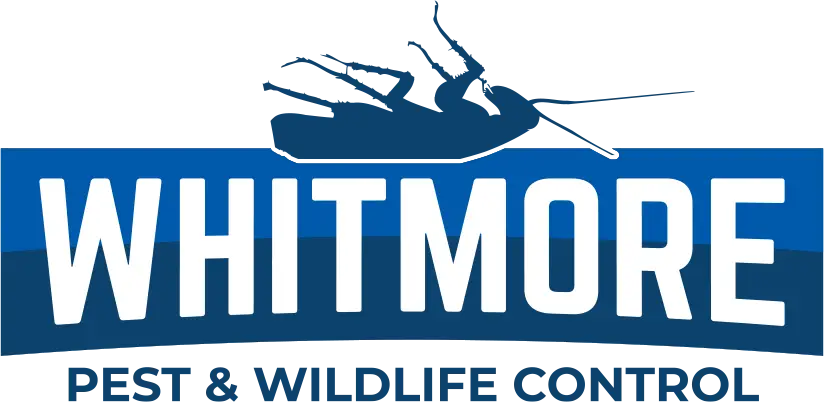Attic Insulation & Restoration: Enhancing Energy Efficiency & Wildlife Prevention
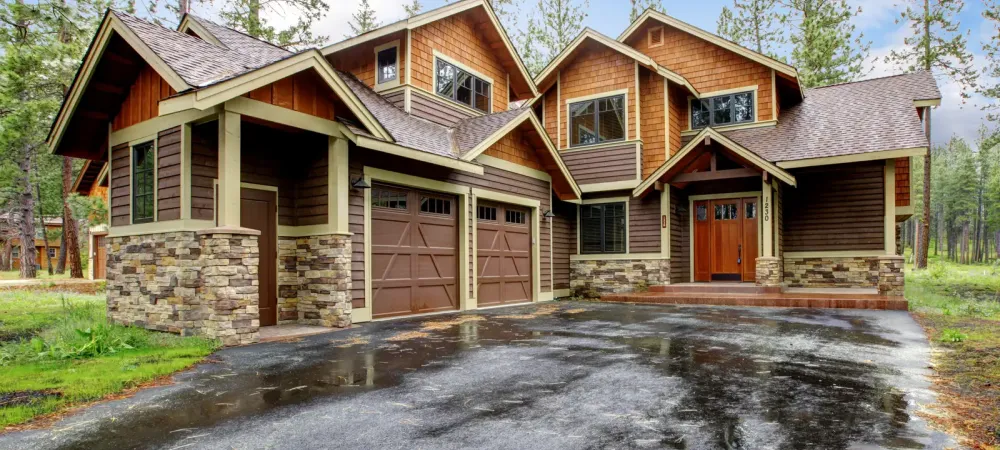
As a homeowner, you play an important role in maintaining a comfortable and secure living environment. However, wildlife-related issues and energy inefficiency can pose challenges. That's where Wildlife Control Operators (WCOs) step in to provide comprehensive solutions. In addition to wildlife removal and exclusion, WCOs offer attic restoration and insulation services that address both wildlife intrusion and energy efficiency.
The Benefits of Attic Restoration
Investing in attic insulation services offered by WCOs brings numerous advantages to homeowners. Here are some of the key benefits you can experience:
- Peace of Mind: By removing contaminants, attic restoration, and insulation services offer peace of mind, ensuring that your home is clean, healthy, and free from potential allergens or harmful pollutants. Working with a WCO who removes contaminated insulation rather than just covering up a problem with a topcoat is important.
- Enhanced Energy Efficiency: Attic insulation improves energy efficiency by reducing heating and cooling costs, ensuring that your home stays comfortable throughout the year while saving on utility bills.
- Increased Indoor Comfort: Proper attic insulation allows you to enjoy consistent temperatures throughout your home, eliminating hot or cold spots and enhancing overall comfort.
- Extended Roof Lifespan: Attic insulation protects your roof by preventing excessive heat buildup, which can lead to premature aging and deterioration of roofing materials.
Why Choose a WCO for Attic Restoration and Insulation Services
When it comes to attic restoration and insulation, selecting a WCO is a smart choice. Here's why:
- Expertise in Wildlife Control: WCOs have specialized knowledge and experience in wildlife control. They understand the behavior of different wildlife species, their entry points, and nesting areas within attics. This expertise allows them to address wildlife-related issues effectively during the restoration process.
- Seamless Integration of Wildlife Control and Restoration: By choosing a WCO for attic restoration, you benefit from a seamless integration of wildlife control and insulation services. WCOs can ensure that any wildlife intrusion issues, such as removing nests, sealing entry points, or sanitizing the area, are properly addressed alongside insulation installation so that the attic isn’t restored just to be contaminated again.
- Knowledge of Building Codes and Regulations: Many WCOs know local building codes and regulations for wildlife control and attic restoration. By choosing a WCO, you can ensure that your attic restoration project meets all necessary requirements, providing you with peace of mind and avoiding potential issues down the line.
By selecting a WCO for your attic restoration, you can benefit from their expertise, seamless wildlife control and restoration integration, and adherence to building codes. It's a wise choice that ensures effective restoration, optimal energy efficiency, and peace of mind regarding wildlife intrusion in your attic.
How to Choose a WCO
When selecting a WCO to provide attic insulation services, it's important to consider several factors. Here are key considerations to help you choose the right WCO:
- Expertise and Trustworthiness: Look for a WCO with expertise in wildlife control, attic restoration, and insulation. They should have a track record of professionalism, commitment to customer satisfaction, and a strong reputation within the industry.
- Comprehensive Inspections: Ensure that the WCO conducts thorough inspections, including evaluating the condition of your attic insulation. They should identify any issues, such as inadequate, damaged, or contaminated insulation, and provide a detailed assessment to guide their insulation recommendations.
- Tailored Solutions: Every home has unique insulation requirements. A reliable WCO will offer customized insulation solutions based on the specific needs of your home. They should consider factors like insulation type, R-value, ventilation, and existing insulation conditions to provide tailored proposals that simultaneously address energy efficiency concerns and wildlife intrusion prevention.
- Knowledge of Ventilation Guidelines: Choose a WCO who understands the importance of proper attic ventilation and considers it during restoration to ensure optimal air circulation and prevent excess moisture or mold issues. This is critical to the integrity of the restoration solution.
- Transparent Pricing: Look for a WCO that communicates its pricing structure clearly, provides transparency in costs, explains the value you will receive, and helps you understand how to compare estimates from different providers. This ensures that you have a clear understanding of the investment involved.
- Success Stories and Testimonials: Consider WCOs sharing before-and-after photos, success stories, and testimonials from satisfied customers. This social proof demonstrates their ability to deliver successful insulation projects and their dedication to customer satisfaction.
- Collaboration with Insulation Professionals: as mentioned earlier, ideally, you can work with a WCO who will handle both the wildlife control issue and insulation restoration, but if you are forced to work with a WCO who partners with another company for the insulation portion, then opt for a WCO that collaborates with reputable insulation contractors or trusted suppliers. This collaboration ensures quality workmanship and a seamless experience for you as the homeowner.
- Ongoing Support and Maintenance: Select a WCO that emphasizes the importance of regular maintenance and offers follow-up services. They should provide recurring inspections to maintain insulation integrity, identify potential entry points that develop as the home ages, and offer guidance on maintaining energy efficiency.
Watch Out for Poor Quality Insulation Work
While price is certainly a factor to consider when choosing a WCO for attic restoration and insulation services, it's essential to prioritize the quality of workmanship to protect your investment. Here are some examples of poor-quality insulation work that you should watch out for:
- Insufficient Insulation Removal: Incomplete removal of old or damaged insulation can lead to lingering issues. Leaving behind contaminated or ineffective insulation materials can contribute to poor indoor air quality, pest infestations, and reduced insulation performance.
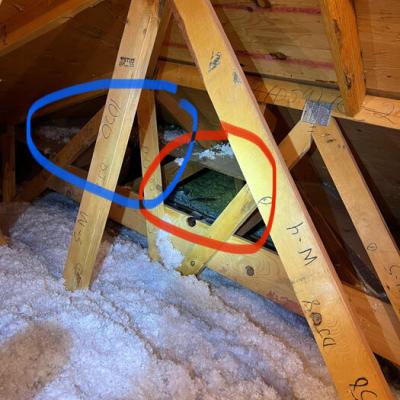
In the red circle, you can see that the provider neglected to remove the old yellow batted fiberglass insulation. The blue circle identifies an access point to an additional 1,500 square feet of attic space, none of which was restored. This is likely due to the difficulty of accessing this area, which requires some physical endurance to crawl through some smaller spaces before the attic reopens but does not excuse the shoddy work.
- Inconsistent or Inadequate Coverage: Subpar insulation work often results in uneven or insufficient coverage throughout the attic space. Insulation gaps, voids, or thin spots compromise energy efficiency, roof lifespan, and overall comfort.
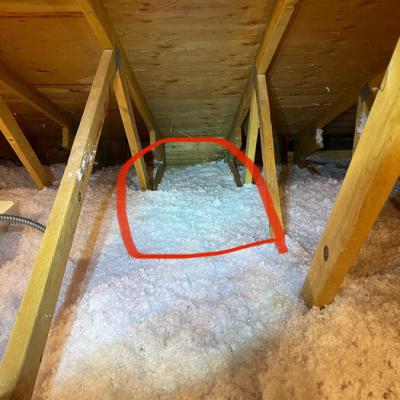
Here, you can see how the insulation level of this provider’s work severely varies from R44 down to R19 at best as the eaves are approached. This is likely due to overhead clearance making it difficult to access the eave space for proper insulating, but it doesn’t excuse the shoddy work.
- Poor Air Sealing: Ineffective air sealing around attic penetrations, such as vents, pipes, electrical wiring, or HVAC ducts, can lead to air leakage and diminish insulation performance. These air leaks contribute to energy loss, moisture problems, and potential re-entry points for wildlife.
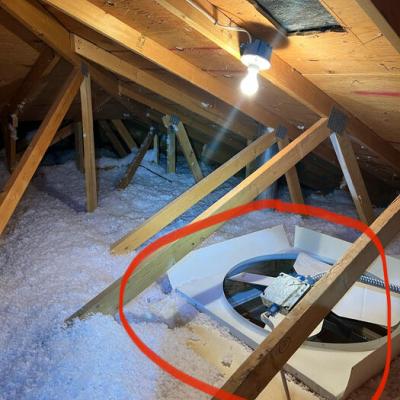
Here, you can see that the surround for the fan is made from cardboard, which collapsed in less than two years and will result in insulation blowing around the attic. It would be better to build surrounds like this out of wood. Also, note the low insulation level surrounding the fan.
- Lack of Ventilation Consideration: Neglecting the importance of proper ventilation in conjunction with attic insulation can result in inadequate air circulation, excess moisture, and potential issues with mold or condensation.
- Ignoring Attic Access Points: Failing to adequately insulate areas around attic access points, such as hatches or pull-down stairs, creates weak spots in the thermal barrier. These areas should be properly insulated and weather-stripped to minimize heat transfer and air leakage.
In conclusion, homeowners can make informed decisions by understanding the benefits, choosing a reputable WCO, and being cautious of poor-quality work, and achieving superior results in their attic insulation and restoration endeavors. With the right WCO by their side, homeowners can enjoy improved energy efficiency, enhanced comfort, and a wildlife-free attic space. Contact Whitmore today if you're in the Denver area and looking for attic insulation services.
